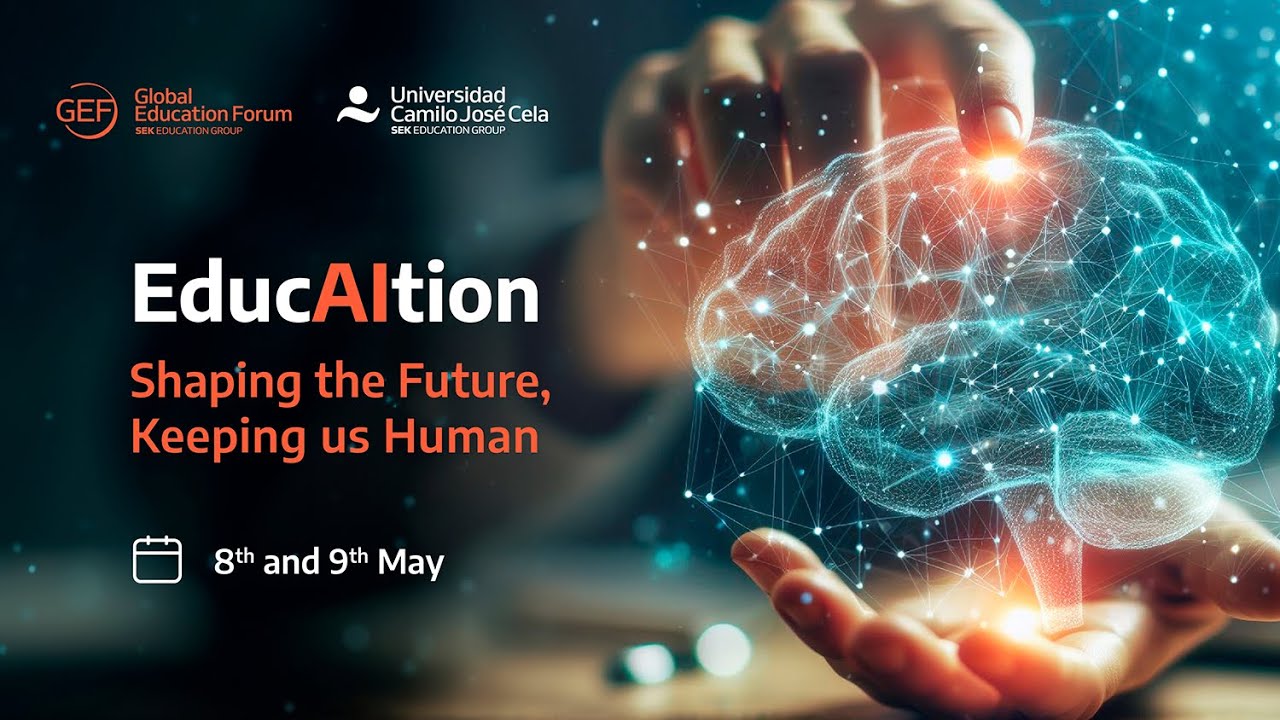Use of Artificial intelligence generates questions about the future of art
Summary
TLDRThe script delves into the burgeoning intersection of artificial intelligence (AI) and the art world. It features a Turkish-born artist leveraging AI to create 'data paintings' using millions of images and a team of specialists. The discussion touches on AI-generated art's ethical considerations, including copyright issues and the potential displacement of human artists. The narrative also addresses the technology's impact on creativity, with some fearing AI could overshadow human artistry, while others see it as a tool for innovative expression. The script concludes with the artist's belief in AI's potential for positive societal contributions, such as environmental problem-solving.
Takeaways
- 🌐 Artificial Intelligence (AI) is permeating various sectors including education, politics, social media, and notably, the art world.
- 🎨 AI-generated art programs are becoming increasingly popular and accessible to the public.
- 🖌️ The creation process of AI art involves a collaborative effort between artists and technology, including computers, software, and 3D printers.
- 🤖 AI is used as a tool to assist in the creative process, described as a 'thinking brush' by the artist, rather than a replacement for human creativity.
- 🌺 Examples of AI art include pieces created from millions of images, such as those of coral reefs or flowers, showcasing the potential of AI in artistic expression.
- 🏛️ AI-generated art has been exhibited in prestigious institutions like the Museum of Modern Art, indicating its acceptance in the art community.
- 🚀 The debate around AI in art is reminiscent of past controversies with new technologies like photography, suggesting a historical pattern of resistance to innovation.
- 💡 AI art raises ethical concerns, particularly regarding the use of copyrighted material and the potential for AI to replace human artists.
- 📈 There is a growing market for AI-generated art through apps, which allows anyone to create art with simple prompts, democratizing the art creation process.
- ⚖️ Legal issues are emerging with AI art, as artists file lawsuits over copyright infringement, highlighting the need for clarity in the use of AI in art.
Q & A
What is the current role of artificial intelligence in the art world?
-Artificial intelligence is becoming a significant part of the art world, with programs that generate art widely available and increasing in popularity.
How does the artist use technology to create his art?
-The artist uses computers, software programs, screens, and 3D printers instead of traditional artist materials, collaborating with a team including computer and data scientists, engineers, architects, and designers.
What is a 'data painting' as mentioned in the script?
-A 'data painting' refers to a type of artwork created by the artist using millions of data points, such as images of coral, to generate the artwork.
What is the significance of the artwork 'Unsupervised' created by the artist?
-The artwork 'Unsupervised' is significant as it is created from research and data from the Museum of Modern Art's archives, showcasing the potential of AI in art creation.
How does the artist use AI to create flowers in his artwork?
-The artist uses AI by feeding it 75 million images of flowers, which the AI then uses to generate its own interpretations of flowers.
What is the debate surrounding AI-generated art?
-The debate involves the ethical concerns of AI-generated art, including the potential for replacing human artists, the use of uncredited or uncompensated images for training AI, and the reflection of power dynamics and inequalities in the data used to train AI.
What concerns do artists have about AI-generated art?
-Artists are concerned that AI-generated art could replace human illustrators and artists, as these apps can produce images faster and cheaper. There are also concerns about AI being trained on stolen or uncredited images.
What is the role of human intention in AI-generated art according to the artist?
-Human intention plays a crucial role in AI-generated art. The artist believes it is on human hands to train the AI to dream and create what they want, emphasizing the importance of human input and intention.
How does the artist view the future of AI in art?
-The artist sees a positive future for AI in art, believing it can help with environmental and other significant global problems, but also cautions that AI reflects the information it is trained on and that clarity and ethical considerations are needed.
What is the role of the human artist in AI-generated art?
-In AI-generated art, the human artist is still central, as they are the ones who train the AI, provide the input, and guide the creative process, ensuring that the AI's output aligns with their artistic vision.
What is the significance of the lawsuit mentioned in the script?
-The lawsuit signifies the growing legal and ethical challenges in the AI art space, with artists alleging copyright infringement due to AI generators using their work without permission or compensation.
Outlines

This section is available to paid users only. Please upgrade to access this part.
Upgrade NowMindmap

This section is available to paid users only. Please upgrade to access this part.
Upgrade NowKeywords

This section is available to paid users only. Please upgrade to access this part.
Upgrade NowHighlights

This section is available to paid users only. Please upgrade to access this part.
Upgrade NowTranscripts

This section is available to paid users only. Please upgrade to access this part.
Upgrade NowBrowse More Related Video

Wird der Mensch überflüssig? - Künstliche Intelligenz und Kunst | KI | DW Doku Deutsch

🤖How AI Works? 🦾Artificial intelligence எப்படி வேலைசெய்கிறது? in Tamil #ai #artificialintelligence

Mind Your Mind: Wisdom in the AI Era | Nina Nagpal | TEDxDFBEDU

Podcast: In Machines We Trust - The AI of the Beholder

GEF Madrid 2024: AI, Art, and Humanities

How artists and critics think AI art will transform the industry | Art Works
5.0 / 5 (0 votes)